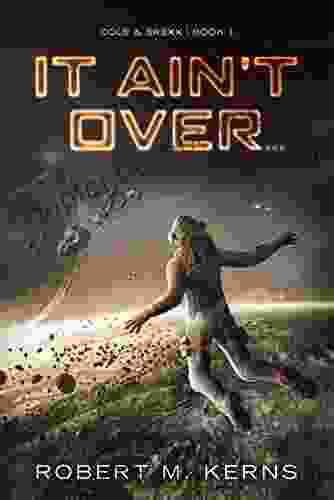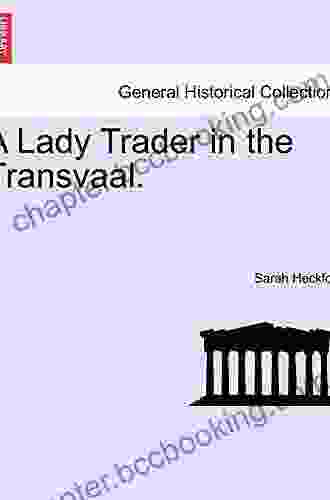Flask Web Development: Developing Web Applications With Python

4.5 out of 5
| Language | : | English |
| File size | : | 3568 KB |
| Text-to-Speech | : | Enabled |
| Screen Reader | : | Supported |
| Enhanced typesetting | : | Enabled |
| Print length | : | 474 pages |
Welcome to the world of web development with Flask, the powerful and versatile Python microframework. Flask is designed to make web development accessible and enjoyable, allowing you to create dynamic, user-friendly, and secure web applications with ease.
This comprehensive guide will take you on a journey through the fundamentals of Flask web development. We'll cover everything from setting up your development environment to deploying your finished applications to the cloud. Along the way, you'll learn best practices, explore advanced techniques, and build a solid foundation in Flask.
What is Flask?
Flask is a lightweight, WSGI-compliant web application framework written in Python. It follows the Model-View-Controller (MVC) architectural pattern, which separates the application logic, data, and presentation layers.
Flask is known for its simplicity, flexibility, and extensibility. It provides a core set of features out of the box, but it also allows you to easily integrate third-party libraries and extensions to enhance your applications' functionality.
Why Choose Flask?
There are many reasons to choose Flask for your web development projects, including:
- Simplicity: Flask has a clean and intuitive API that makes it easy to get started with web development.
- Flexibility: Flask is a highly customizable framework that allows you to tailor your applications to your specific needs.
- Extensibility: Flask supports a wide range of third-party libraries and extensions, giving you the power to build complex and feature-rich applications.
- Community: Flask has a large and active community of developers who provide support and resources.
Getting Started with Flask
To get started with Flask, you'll need:
- Python 3.6 or later
- A text editor or IDE
- A virtual environment (optional)
Once you have your development environment set up, you can create your first Flask application:
python from flask import Flask
app = Flask(__name__)
@app.route("/") def hello_world(): return "Hello, World!"
if __name__ =="__main__": app.run(debug=True)
This code creates a simple Flask application that responds to HTTP GET requests at the root URL ("/") with the message "Hello, World!". To run the application, you can use the following command:
python main.py
This will start the Flask development server on your local machine. You can then visit http://localhost:5000 in your web browser to see your application in action.
Building Your First Flask Application
Now that you've created your first Flask application, let's explore some of the basic features and concepts of Flask web development.
Routing
Routing is the process of mapping URLs to functions in your application. Flask uses a decorator-based routing system that makes it easy to define which functions handle specific HTTP requests.
For example, the following code defines a route that handles GET requests at the "/about" URL:
python @app.route("/about") def about(): return "This is the about page."
When a user visits the "/about" URL, the `about()` function will be called and its return value will be displayed in the browser.
Templating
Templating is the process of generating HTML from a template file. Flask uses the Jinja2 templating engine, which provides a powerful and flexible way to create dynamic and interactive web pages.
To use templating in your Flask application, you can create a template file with the `.html` extension. For example, the following template file defines a simple HTML page with a title and a body:
This is my Flask application.
You can then use the `render_template()` function to render the template in your view functions:
python @app.route("/") def home(): return render_template("index.html")
This code will render the `index.html` template and display it in the browser.
Forms
Forms are an essential part of any web application. Flask provides support for creating and handling forms with ease.
To create a form in Flask, you can use the `Flask-WTF` extension, which provides a simple and secure way to handle form submission and validation.
For example, the following code creates a simple form with a text input and a submit button:
python from flask_wtf import FlaskForm from wtforms import StringField, SubmitField
class MyForm(FlaskForm): name = StringField("Name") submit = SubmitField("Submit")
@app.route("/", methods=["GET", "POST"]) def home(): form = MyForm() if form.validate_on_submit(): name = form.name.data return f"Hello, {name}!" return render_template("index.html", form=form)
This code creates a form with a text input field named "name" and a submit button named "Submit". When the form is submitted, the `validate_on_submit()` function is called to validate the form data. If the form data is valid, the `name` variable will contain the value entered by the user.
Deploying Your Flask Application
Once you've developed your Flask application, you'll need to deploy it to a production environment so that users can access it.
There are many different ways to deploy a Flask application, including:
- Using a cloud hosting provider
- Using a virtual private server (VPS)
- Using a containerization platform
The best deployment option for your application will depend on your specific needs and requirements.
4.5 out of 5
| Language | : | English |
| File size | : | 3568 KB |
| Text-to-Speech | : | Enabled |
| Screen Reader | : | Supported |
| Enhanced typesetting | : | Enabled |
| Print length | : | 474 pages |
Do you want to contribute by writing guest posts on this blog?
Please contact us and send us a resume of previous articles that you have written.
 Book
Book Novel
Novel Page
Page Chapter
Chapter Text
Text Story
Story Genre
Genre Reader
Reader Library
Library Paperback
Paperback E-book
E-book Magazine
Magazine Newspaper
Newspaper Paragraph
Paragraph Sentence
Sentence Bookmark
Bookmark Shelf
Shelf Glossary
Glossary Bibliography
Bibliography Foreword
Foreword Preface
Preface Synopsis
Synopsis Annotation
Annotation Footnote
Footnote Manuscript
Manuscript Scroll
Scroll Codex
Codex Tome
Tome Bestseller
Bestseller Classics
Classics Library card
Library card Narrative
Narrative Biography
Biography Autobiography
Autobiography Memoir
Memoir Reference
Reference Encyclopedia
Encyclopedia Neil Chenoweth
Neil Chenoweth Moon Ho Jung
Moon Ho Jung Michelle Anderson
Michelle Anderson Mike Martin
Mike Martin Rachelle Crawford
Rachelle Crawford Sharmila Desai
Sharmila Desai Taylor Warfield
Taylor Warfield Toby Neighbors
Toby Neighbors Zara Houshmand
Zara Houshmand Niall Teasdale
Niall Teasdale Mike Brooks
Mike Brooks T R Napper
T R Napper Miriam Pawel
Miriam Pawel Mr Marmion
Mr Marmion Xabier K Fernao
Xabier K Fernao Sam Maggs
Sam Maggs Richard Ania
Richard Ania Vance Packard
Vance Packard Michael Blackburn
Michael Blackburn Nancy Mckenzie
Nancy Mckenzie
Light bulbAdvertise smarter! Our strategic ad space ensures maximum exposure. Reserve your spot today!

 Todd TurnerThe Assassination of Robert Kennedy: A Haunting Tale of Loss, Betrayal, and...
Todd TurnerThe Assassination of Robert Kennedy: A Haunting Tale of Loss, Betrayal, and... Louis HayesFollow ·19.3k
Louis HayesFollow ·19.3k Mario Vargas LlosaFollow ·9.3k
Mario Vargas LlosaFollow ·9.3k Bryan GrayFollow ·8.7k
Bryan GrayFollow ·8.7k Alexandre DumasFollow ·19.2k
Alexandre DumasFollow ·19.2k Ivan TurnerFollow ·17.5k
Ivan TurnerFollow ·17.5k Albert ReedFollow ·12.2k
Albert ReedFollow ·12.2k Jedidiah HayesFollow ·8.6k
Jedidiah HayesFollow ·8.6k Rudyard KiplingFollow ·12.8k
Rudyard KiplingFollow ·12.8k

 Trevor Bell
Trevor BellUncover the Thrilling Mystery in "It Ain't Over, Cole...
Prepare yourself...

 Garrett Bell
Garrett BellHow to Stay True to Yourself and Stand Out From the Crowd
In a world that...

 Dennis Hayes
Dennis HayesDrill Instructor Strategies And Tactics For Success
Unleash Your Inner Warrior and Conquer...

 Guy Powell
Guy Powell101 Awesome Women Who Changed Our World: A Celebration of...
Throughout history,...

 Ashton Reed
Ashton ReedAn Iraq War Tank Commander's Inspirational Memoir of...
When he was just 19 years old, John Q....

 Dean Cox
Dean CoxLady Trader in the Transvaal: A Literary Safari through a...
Prologue: A Journey into the...
4.5 out of 5
| Language | : | English |
| File size | : | 3568 KB |
| Text-to-Speech | : | Enabled |
| Screen Reader | : | Supported |
| Enhanced typesetting | : | Enabled |
| Print length | : | 474 pages |










